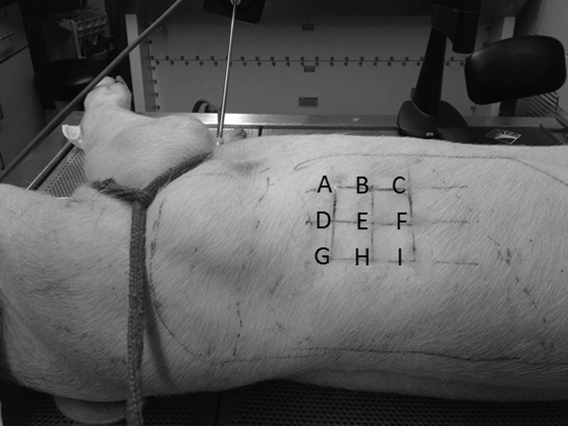Porcine Trials
Porcine Trials Heading link

A euthanized pig laying on its side.
- Experiments were carried out on two freshly sacrificed female Landrace and Yorkshire cross pig subjects (PS) that weighed from 30 to 35 kg. Immediately upon sacrifice the lung was inflated by air with positive pressure of 5 cm H2O gage.
- The pig was then secured in the left lateral decubitus position (right-side-up) with the skin hair of the measurement area shaved. The skin surface motions of 9 evenly spaced points in an array located in the area from the fifth rib to the ninth rib were measured by a laser Doppler vibrometer (LDV) (PDV-100, Polytec, Irvine, CA).
- The amplifier, shaker and impedance head were the same as the ones used in the human percussion experiment. The same chirp signal was generated from a dynamic signal analyzer (SignalCalc ACE, Data Physics, San Jose, CA) and was fed into the power amplifier that was connected to the electromagnetic shaker.
- The location of the vibratory excitation was at the chest surface on the top of the sternum, which is the same location as for the human percussion experiment.
- After the “normal case” experiment was complete, a small incision was made in the seventh intercostal space in the right mid-axillary line to create the PTX state. A 5 mm thoracoscopic trocar (Endopath Dilating Tip, model 355, Ethicon, Cincinnati, OH) was inserted into the pleural space to confirm the controlled state.
- Then air was introduced through the incision using a syringe. The same experimental procedures were performed again.